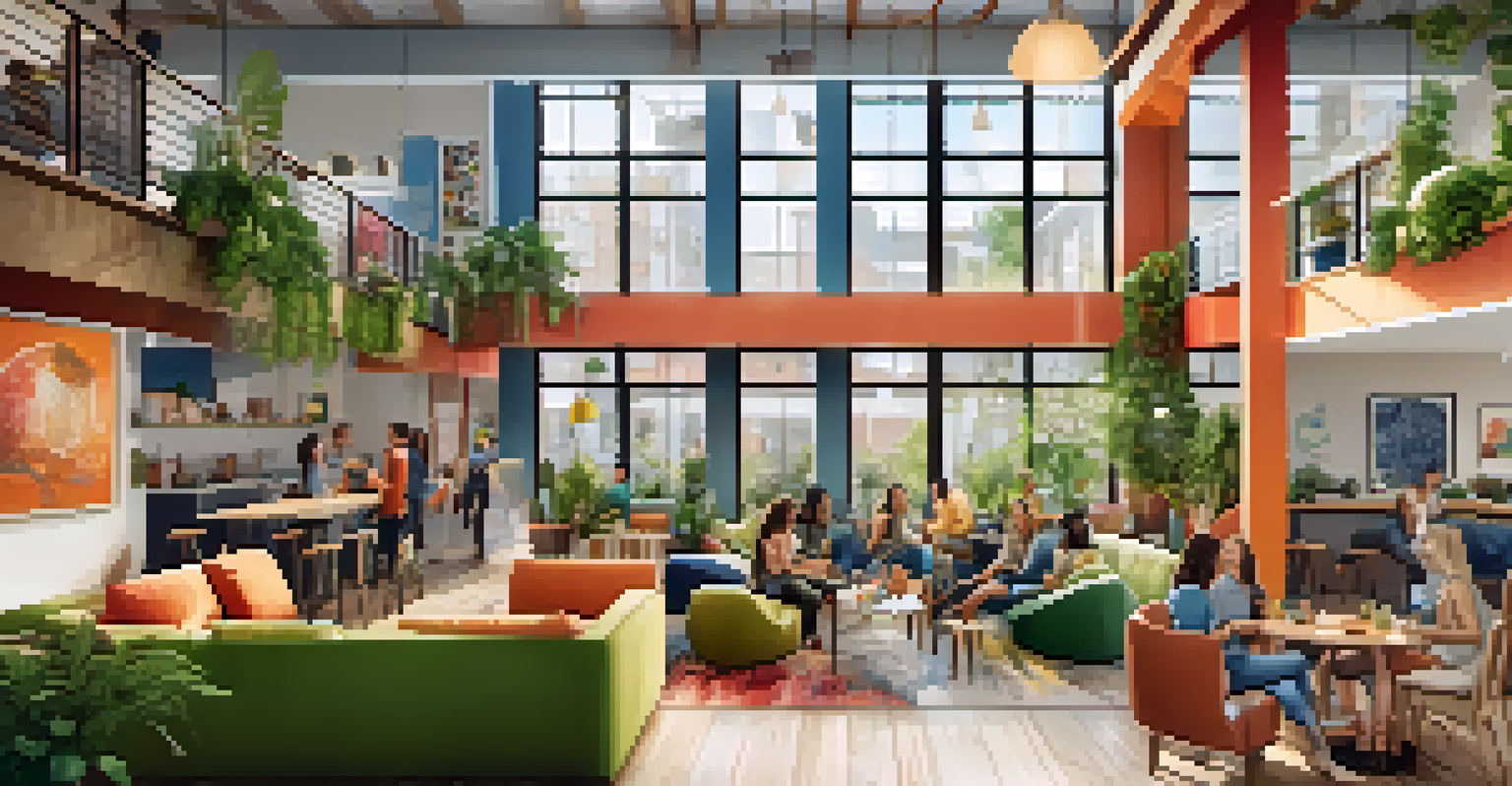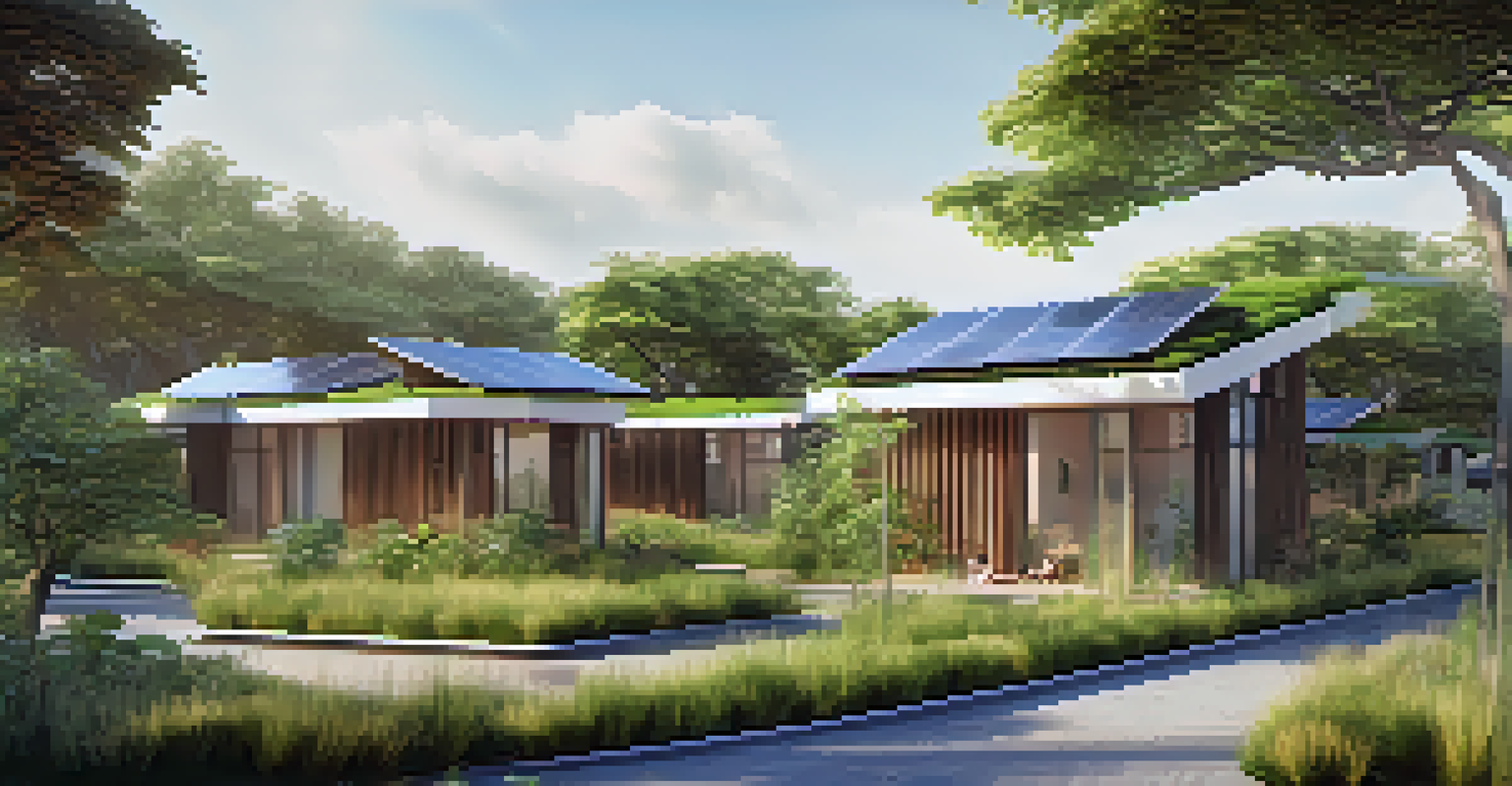The Future of Urban Housing: Adapting to Remote Work Trends

The Shift to Remote Work: A New Normal for Urban Living
The pandemic has reshaped our work habits, with remote work becoming the norm for many. This shift has prompted us to rethink how we live in urban environments. As more people work from home, the demand for residential spaces that support this lifestyle is increasing.
Remote work has become a permanent fixture in many industries, prompting a reevaluation of how we design our living spaces.
Urban housing needs to adapt by incorporating dedicated workspaces, soundproofing, and high-speed internet access. These features are essential in ensuring that remote workers can be productive and comfortable at home. Moreover, the traditional open-plan layouts may no longer suffice for those needing privacy during work hours.
Ultimately, the future of urban housing will be about creating multifunctional spaces that cater to both work and leisure. As we embrace this new normal, cities must evolve to support a lifestyle that blends professional and personal needs seamlessly.
Designing Homes for Productivity and Comfort
As remote work continues to be popular, home designs must foster productivity without sacrificing comfort. This means incorporating elements like ergonomic furniture, ample lighting, and quiet zones to create an environment conducive to focused work. The goal is to make home offices feel less like an afterthought and more like an integral part of the living space.

Homeowners are increasingly seeking out spaces that can easily transform from work to relaxation areas. For example, utilizing modular furniture allows for flexible arrangements that can adapt to various activities throughout the day. This adaptability is crucial for maintaining work-life balance, especially in smaller urban apartments.
Urban Housing Adapts for Remote Work
As remote work becomes the norm, urban housing must incorporate dedicated workspaces and features that promote productivity.
Moreover, incorporating natural elements, such as plants and large windows, can enhance well-being and productivity. A home that feels inspiring and uplifting can significantly impact a remote worker's daily experience, making thoughtful design choices essential in the future of urban housing.
The Rise of Co-Living Spaces in Urban Areas
Co-living spaces are gaining traction as an appealing solution for remote workers seeking community and collaboration. These shared living arrangements offer not only private bedrooms but also communal workspaces and social areas that foster interaction among residents. In a time when isolation can be a challenge, co-living provides a sense of belonging.
Sustainable urban living is not just a trend; it is a necessity for our future, especially as we adapt to new work dynamics.
This trend appeals particularly to younger professionals and digital nomads who value flexibility and affordability in urban settings. By sharing resources and amenities, residents can reduce living costs while enjoying a vibrant community atmosphere. It's a win-win for those looking to balance work and social life.
As co-living spaces become more prevalent, they will likely start incorporating more remote work-friendly features, such as high-speed internet and soundproof areas. This evolution will cater to the needs of modern workers while promoting a collaborative lifestyle that thrives on connection.
Smart Technology: Enhancing Remote Work from Home
Smart home technology is revolutionizing urban living, making it easier for remote workers to manage their homes efficiently. From smart thermostats to advanced lighting systems, these innovations can optimize comfort and productivity. Integrating smart solutions can create a more seamless work-from-home experience.
For instance, voice-activated assistants can help manage tasks, set reminders, and control various home devices, allowing remote workers to focus more on their tasks. Additionally, smart security features provide peace of mind for those living in urban environments, ensuring safety while working from home.
Community Spaces Foster Connection
Even with remote work on the rise, the importance of community spaces in urban housing is vital for social interaction and mental well-being.
As technology continues to advance, the integration of smart features into urban housing will become increasingly common. This not only enhances the quality of life for residents but also positions urban areas as more attractive options for remote workers looking for convenience and security.
Sustainable Urban Housing: A Focus on Eco-Friendly Living
With the growing awareness of environmental issues, sustainable urban housing is becoming a priority. Remote work offers an opportunity to rethink our living spaces with eco-friendly designs that minimize carbon footprints. This includes energy-efficient appliances, green roofing, and the use of sustainable materials in construction.
Urban planners and developers are now more focused on creating homes that not only prioritize comfort but also prioritize sustainability. By incorporating green spaces and promoting public transportation, cities can reduce congestion and encourage healthier lifestyles. These changes resonate well with remote workers who often value sustainability and community.
As we move forward, expect to see more urban housing projects that emphasize eco-friendly practices. This will not only benefit the environment but also attract residents who are passionate about living in harmony with nature while enjoying the conveniences of urban life.
The Importance of Community Spaces in Urban Housing
Even as remote work rises, the need for community spaces in urban housing remains vital. Shared areas such as parks, lounges, and coworking spaces provide opportunities for social interaction and networking. These spaces can serve as a bridge between the isolation of working from home and the need for human connection.
Urban housing must prioritize these communal areas to foster a sense of belonging among residents. Activities like community events, workshops, or fitness classes can help build relationships and create a vibrant atmosphere. This is especially important in a world where remote workers may feel disconnected from traditional workplace environments.
Smart Tech Enhances Home Efficiency
Integrating smart technology into urban living can significantly improve the efficiency and comfort of remote work environments.
Ultimately, integrating community spaces into urban housing is essential for maintaining mental well-being and encouraging collaboration. As we look to the future, designing homes that promote connection will be a key factor in creating thriving urban environments.
Rethinking Urban Infrastructure for Remote Work
The rise of remote work requires a reevaluation of urban infrastructure to support new living and working dynamics. Cities must ensure that essential services, such as high-speed internet and public transportation, are accessible to all residents. This infrastructure is crucial for remote workers who rely on connectivity to perform their jobs effectively.
Additionally, urban planners must consider the layout of cities to accommodate the needs of remote workers. This could involve creating more local hubs for cafes or coworking spaces where individuals can work outside their homes. A thoughtfully designed urban environment can encourage productivity and reduce the need for long commutes.

As cities adapt to this new landscape, a focus on infrastructure will be key to supporting a growing population of remote workers. By prioritizing connectivity and accessibility, urban areas can enhance the quality of life for residents while embracing the future of work.